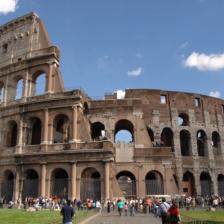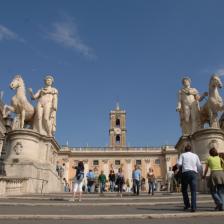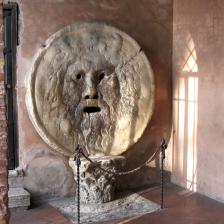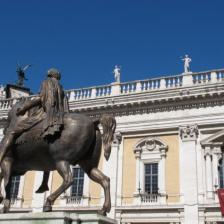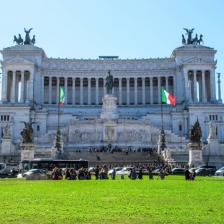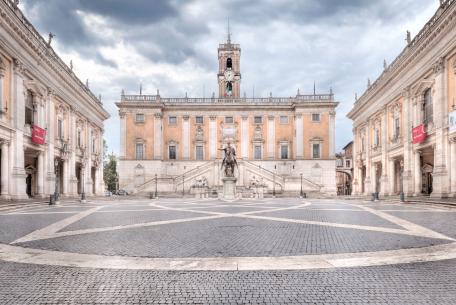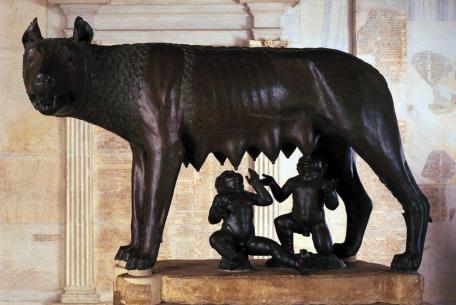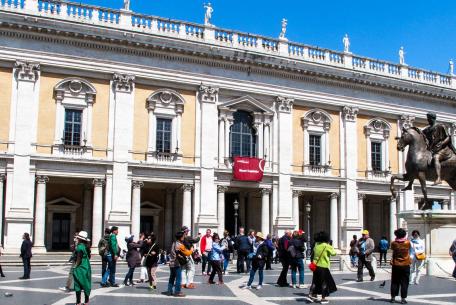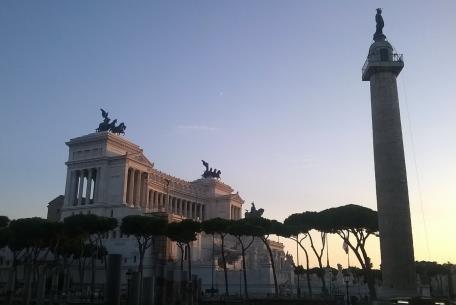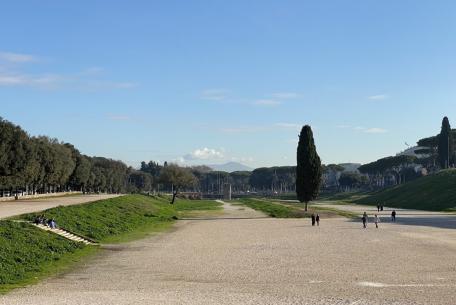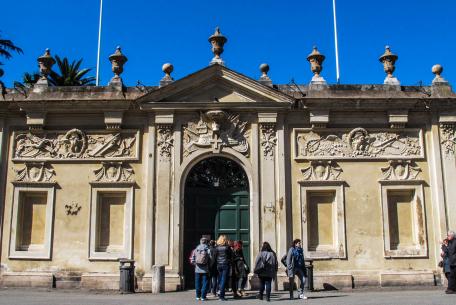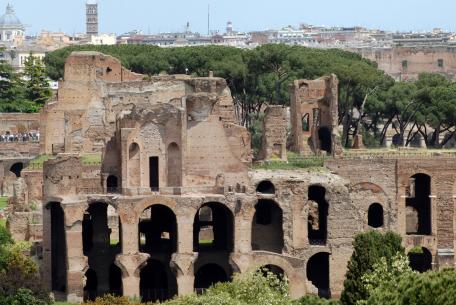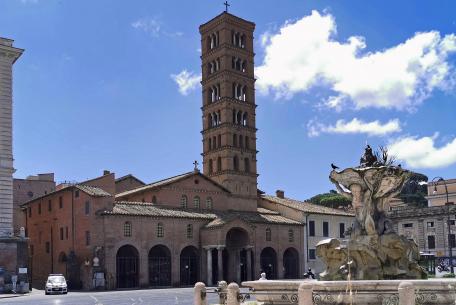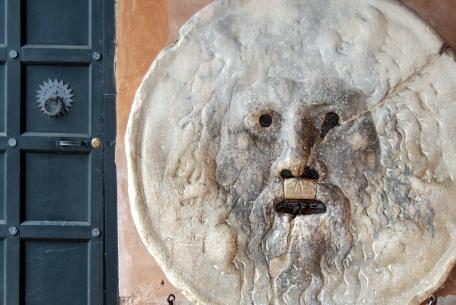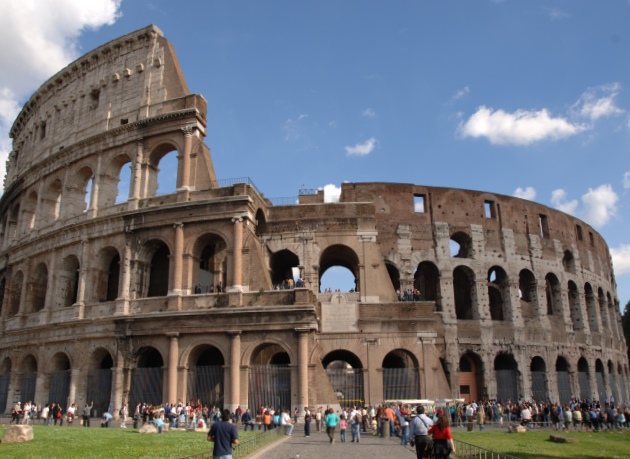
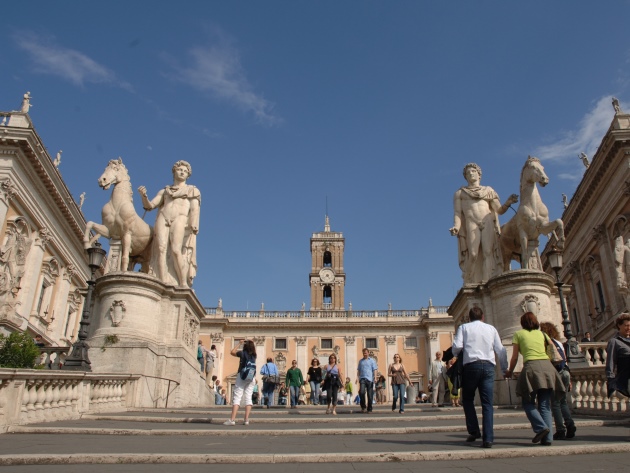
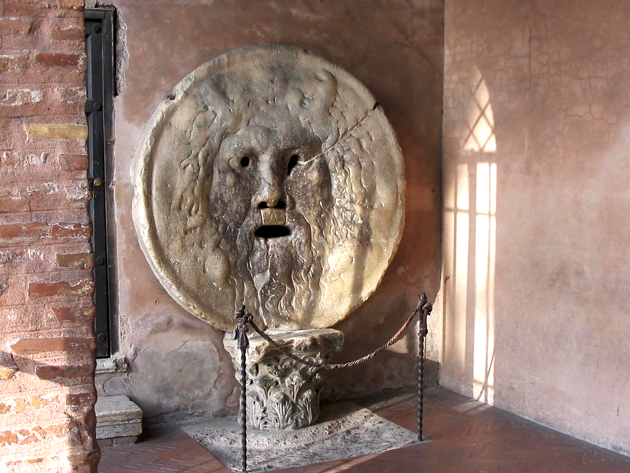
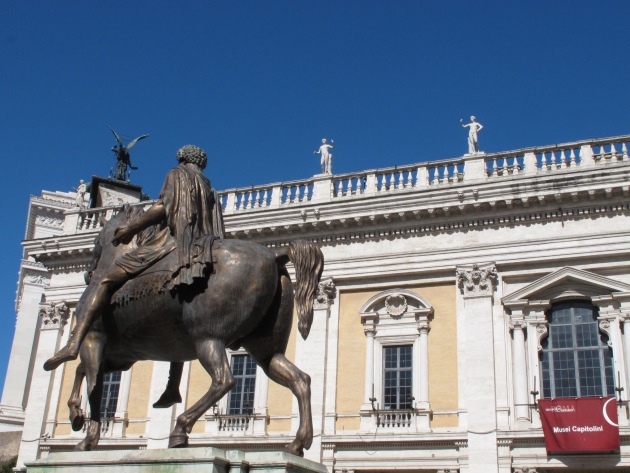
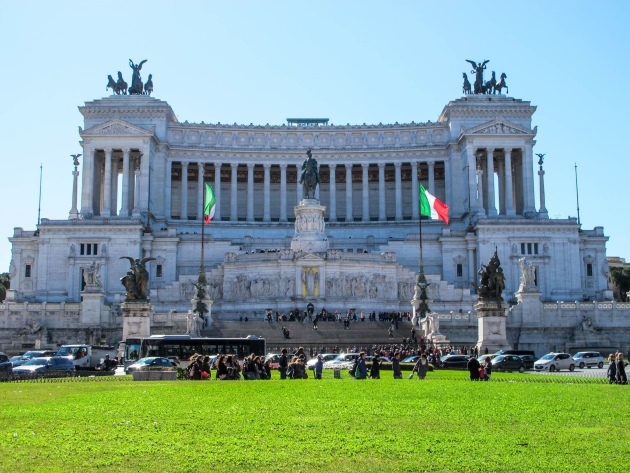
The archaeological area of the centre of Rome is a unique open-air set, a suggestive and precious testimony of the past, ready to be brought on the screen.
The Colosseum, a true symbol and icon of the city, provides the backdrop for “Un americano a Roma” (An American in Rome - 1954) by Steno – a classic example of the commedia all’italiana genre. The protagonist is Nando Mericoni, the unforgettable character played by Alberto Sordi, who, climbs to the top of the Flavian Amphitheater and threatens to throw himself off if his dream – a trip to Kansas City – fails to come true. While a sense of fun prevails in Steno’s film, this cannot be said for Bernardo Bertolucci’s “Il conformista” (The Conformist - 1970), in which, again, the monument "plays" a leading role. The Conformist ends dramatically inside this amphitheatre, when the main character implicates an innocent person as guilty of a murder which he, himself, has committed.
Piazza del Campidoglio, born from Michelangelo's genius, is a magical location. The Russian director, Andreij Tarkovskij, shot a truly powerful scene there for his film, “Nostalghia” (1983): a friend of the main character – bearing witness to the irremediable loss of simplicity caused by modern life – commits suicide.
In the same square is Palazzo dei Conservatori, in the courtyard of which we find very large sculptural works dating back to the times of Ancient Rome. The director, Jane Campion chose this location for a scene in her beautiful “The Portrait of a Lady” (1996). Marble statues provide the disturbing backdrop for the scene in which Nicole Kidman, in the role of Isabel Archer, realises that she is being cruelly mistreated.
The Vittoriano is the imposing monumental work overlooking Piazza Venezia, "starring" in "The Belly of an Architect” (1987) by Peter Greenaway, an oneiric film in which the world of dreams and lucid folly blend, intensifying the scenographic power of this building, also knonw with the nicknames "typewriter" and "wedding cake". The Vittoriano also appears in “The Core”, by Jon Amiel, shot in 2003. In this catastrophe genre film, the majestic monument is blown up, and the Colosseum collapses when the rotation of the nucleus of the Earth suddenly ceases.
In the film “Palombella rossa” (Red Wood Pigeon - 1989) by the Roman director, Nanni Moretti, the last scene is set in the Circus Maximus. The sequence is symbolic – a rarity in Moretti’s work; a red paper-pulp sun rises above the ancient building, over the Aventine Hill.
A journalist, Gregory Peck, a Princess, Audrey Hepburn, Rome itself, as seen from a Vespa scooter, made the wonderful and romantic film "Roman Holiday" by William Wyler timeless. The first meeting of the two main characters, amid many misapprehensions, takes place close to the Arch of Septimius Severus, with the Roman Forum as a backdrop. Then, a brief visit to the Colosseum. However, the most famous scene takes place under the portico of Santa Maria in Cosmedin, with its Mouth of the Truth. Peck tells Hepburn the legend about the ancient mask: the mouth bites the hands of liars. He then puts his hand into the mouth and cries out in agony. Shock and surprise dissolves into laughter. Thus, a sewer cover from ancient Rome has become an unforgettable icon of the city, attracting tourists, nostalgic, and curious in the mood for a thrill.
 Condividi
Condividi












































